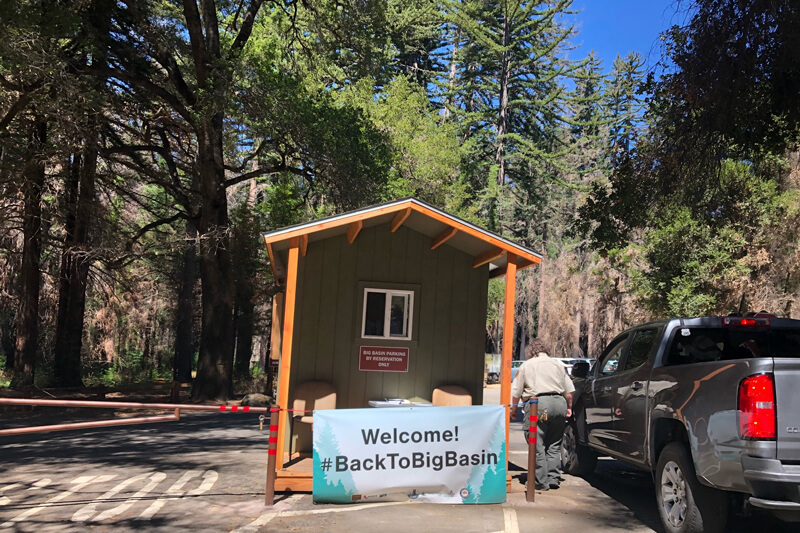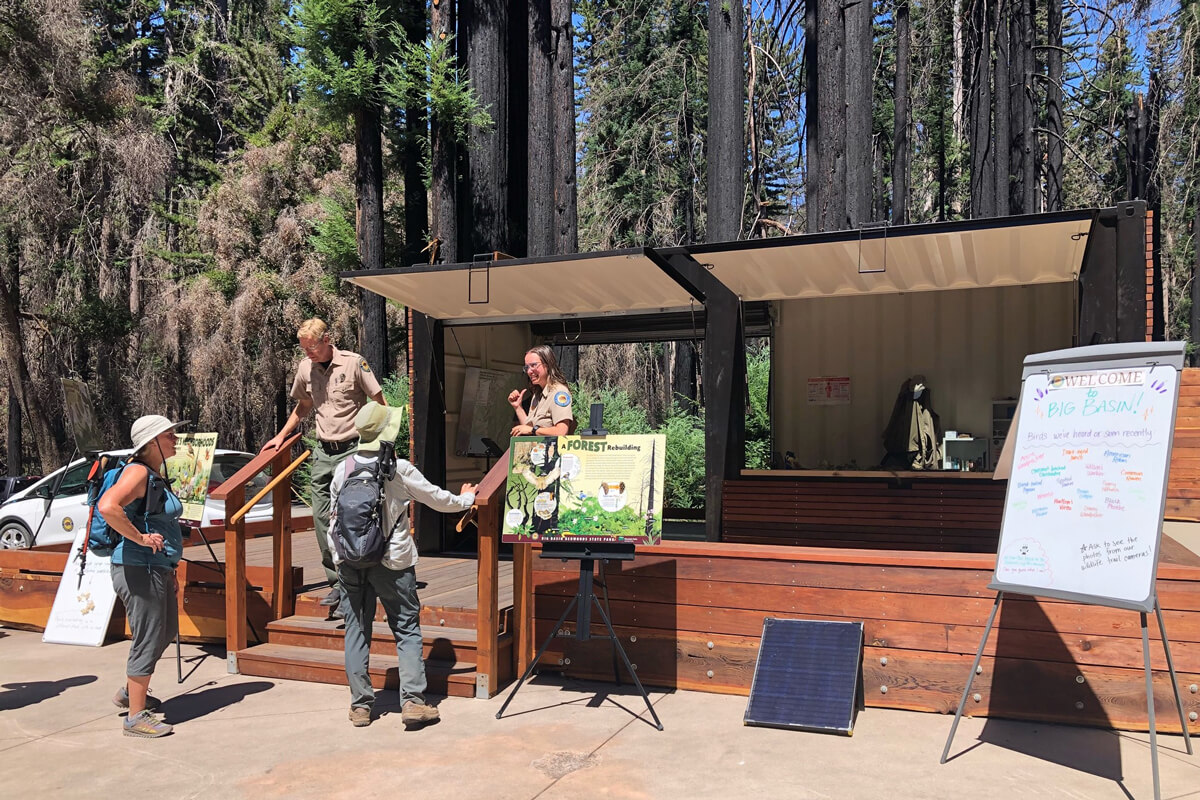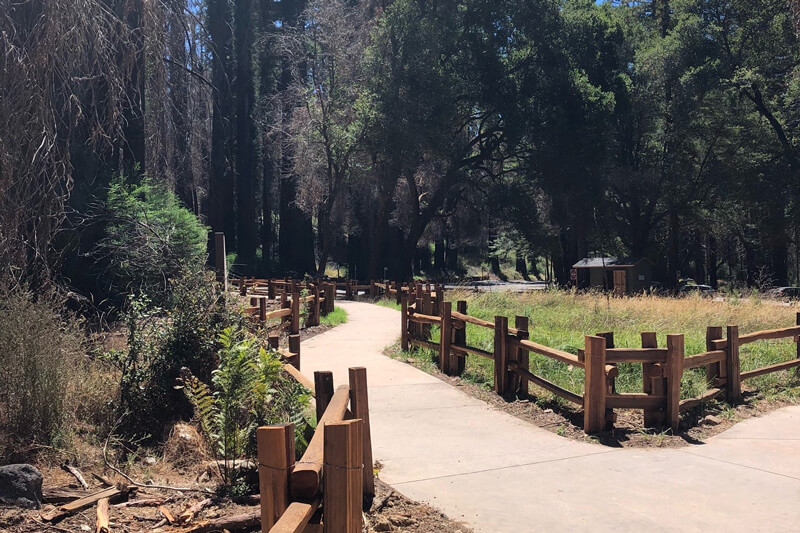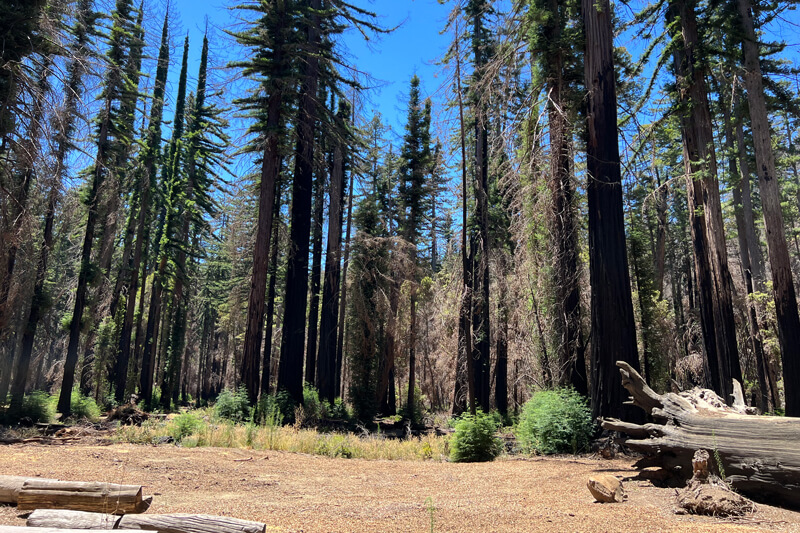Big Basin Returns
photo by Amanda Krauss.
Welcoming of Old Friends
Amanda Krauss is not only Sempervirens Fund’s Director of Tribute and Legacy Giving. She has been a frequent collaborator with State Park staff at Big Basin for many years. The fire’s impact on the park, and on Sempervirens Fund’s tribute groves there, have weighed heavily on her and her team. We honor the legacies our community members celebrate with tributes among the redwoods. And returning to the park as a visitor meant a lot to her. She was proud to be among the park’s first visitors on opening day.
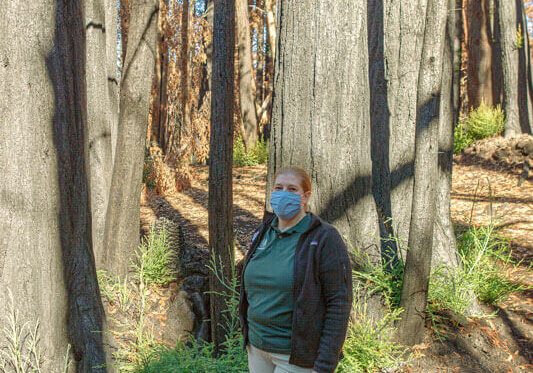
We asked her to reflect on how the park staff and visitors were feeling about the day. “The mood was excited and upbeat, but also calm. It had a community feel. It was a welcoming of old friends—people and trees,” said Amanda. “It was great to get reacquainted with staff I’ve known for a long time and to rejoice in the moment together. And California State Parks was very well organized. It was easy to get into the park—there were numbered parking spots—and get out onto the trails.”
And Amanda hit the paths. She walked the Redwood Loop and part of the Dool Trail traversing between them on a short section of the iconic Skyline-to-Sea-Trail. “Clearly a lot of hard work has gone into preparing the trails to feel safe and easy to access.”
She sent out this note to donors:
Visiting Big Basin
Although much of Big Basin Redwoods State Park is not yet open to the public for safety reasons, portions of Big Basin, including the Redwood Loop Trail, are now open for limited day-use access. If you plan to drive into Big Basin, parking reservations are required and include a $6 per vehicle fee and a $2 entry fee. However, no reservations are needed for visitors arriving by foot, bike, or bus. Santa Cruz Metro’s Bus Route 35 offers weekend service to Big Basin State Park during the summer months. And Big Basin’s coastal portion, Rancho del Oso, doesn’t require reservations or fees. And now that Highway 236 is open, we encourage you to at least take a drive through the park and reconnect with an old friend recovering from fire.
Big Basin Reopens
video by © Frans Lanting.
Two years after Big Basin Redwoods State Park was engulfed by the CZU fire, it reopened to the public. The forest's recovery can be seen on trails made safe for the public thanks to great efforts by staff and volunteers thanks in great part to the support of donors like you who helped make the work possible. Frans Lanting worked with State Parks to document their recovery efforts.
Learning from Forests After Fire
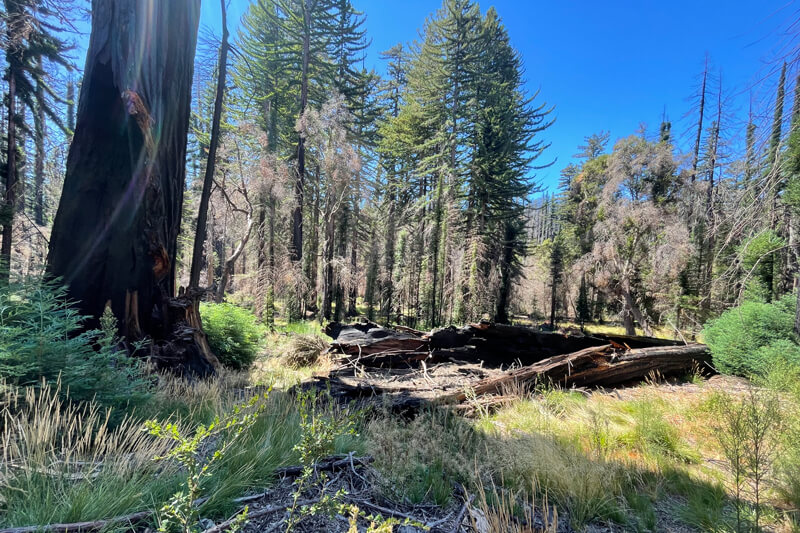
Sempervirens Fund interns working with Amanda to support evaluations of tribute trees and groves affected by the fire, have also visited Big Basin for the first time. UC Santa Cruz students James Salvador (B.S., Geology) and Luke Williams (B.S., Environmental Sciences) have spent most of their time with us working among the cool, green redwood forests at Castle Rock State Park. A visit to Big Basin was eye-opening.
“Castle Rock is lush but when you drive down Highway 1, you can see the charred matchstick redwoods from the fire,” said Luke. “I was expecting the park to be a lot of that, but I was surprised to see the redwoods alive.”
The team is visiting tribute and legacy trees and digitally plotting every tree. They are learning a lot about redwoods, and the effects of climate change, along the way.
“I’ve learned how redwoods are super resilient,” said James. “The hollowed-out trees seem dead but you see the green sprouting off to the side. There’s a lot of birds but not much wildlife like we see at Castle Rock.”
“Driving through the park, I was glued to the window and mesmerized, mostly imagining the height the flames went up to,” Luke added. “It is mind-blowing what they can survive. They look like they can defy physics, especially with the trees that have lost a lot of wood and are still standing.”
“Redwoods still standing make me less worried about their health but I can see the climate is changing the landscape of the forest,” added James.
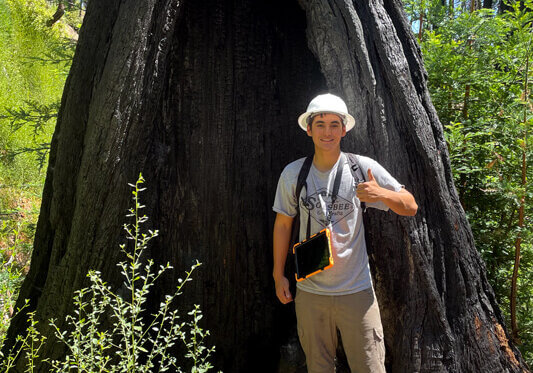
Caring for the Gateway
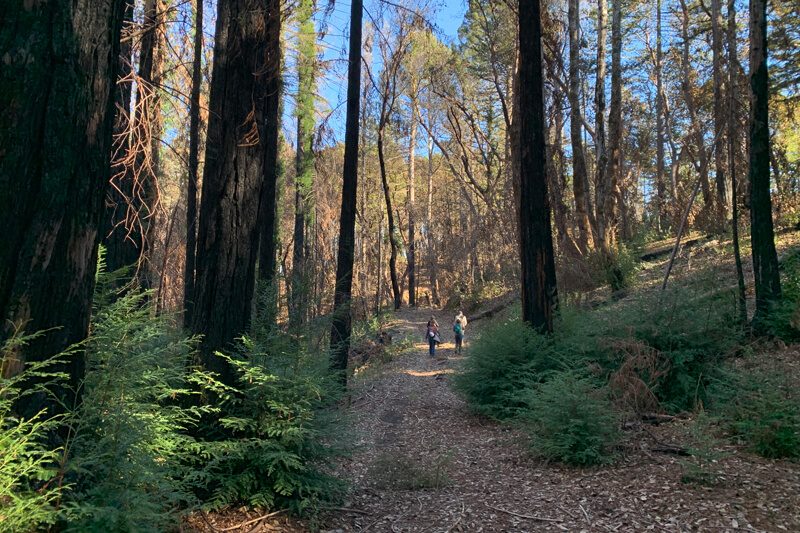
For six months, Sempervirens Fund stewardship managers have also been hard at work assessing forest conditions at the 153-acre Gateway to Big Basin, the property bisected by Highway 236 which brings visitors into the park.
“While we still hope the Gateway will become part of Big Basin, we are actively deepening our understanding of the ecological conditions throughout the property,” says Director of Land Conservation Laura McLendon. “So far, the forest conditions remain the same—and align with the conditions we reviewed when we were purchasing the property—so we are not triggering any new obligations for monitoring, stewardship, or restoration activities, which is great news.”
The team finished up botanical surveys–which will help inform where we might site future work and management activities–assessing hazard trees for removal, and monitoring wildlife. Clearing of French Broom has been a priority, as it was for Big Basin, when emergency donor funding helped park staff remove the non-native plant from key areas in the state park.
“There’s a lot of green on the ground, which is great, but a reminder that we have to monitor and address non-native and invasive plants and be mindful of creating new fuel for future fire,” added McLendon. “When the forecast called for lightning strikes the week of the CZU anniversary I was reminded of the anxiety of a few years ago. Since then, the colors of the forest went from black and white to brown to green and the birdsong is very active. It feels so much more alive each time we go. But the sunscreen in the forest … that takes some getting used to.”
More to Explore
- Learn more about how we’re Reimagining Big Basin
- Read more about the Gateway to Big Basin
- Learn more about the forest’s post-fire recovery: Nature Needs Time to Heal
